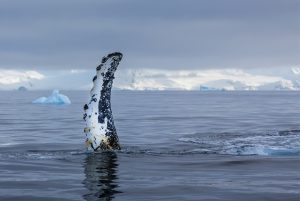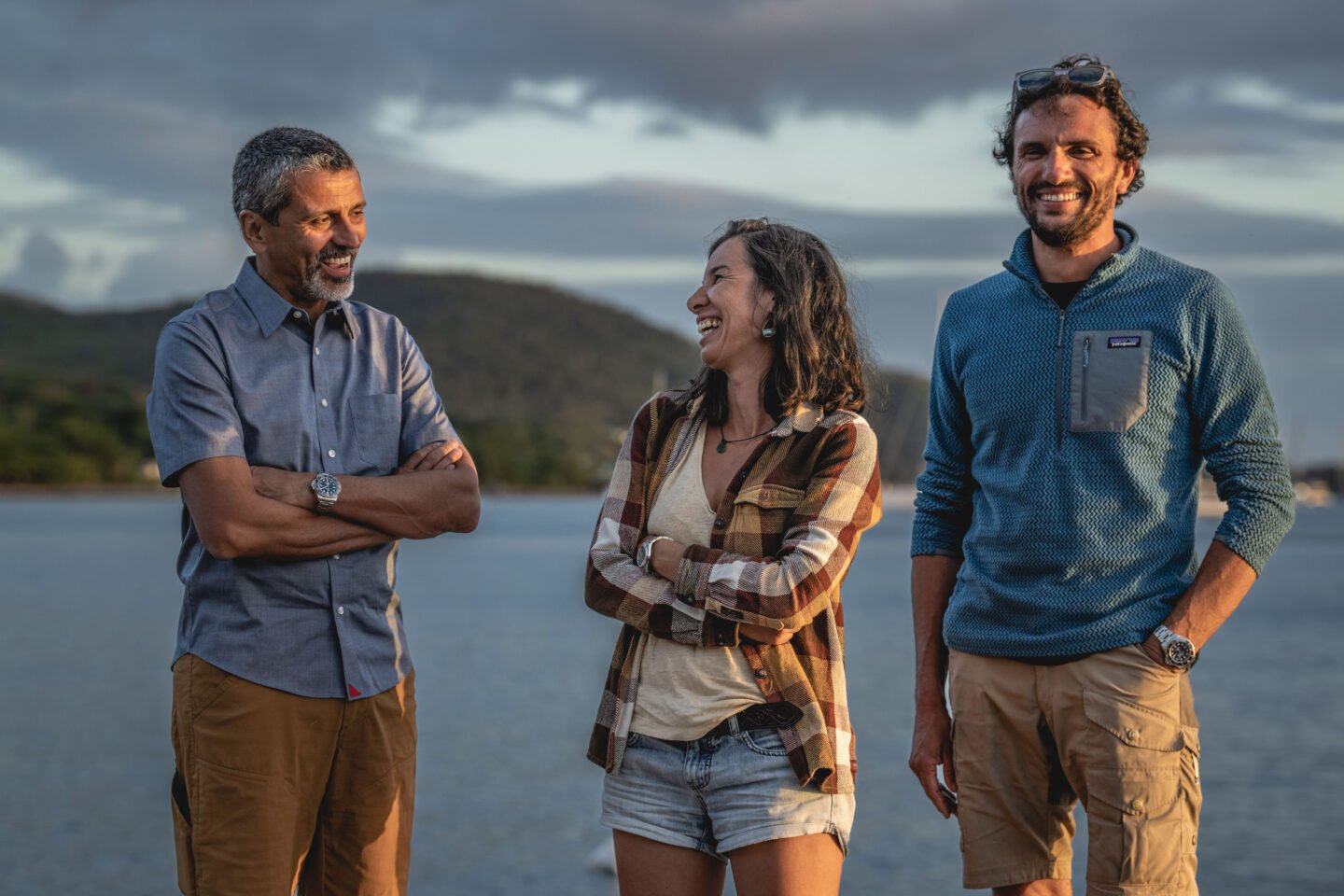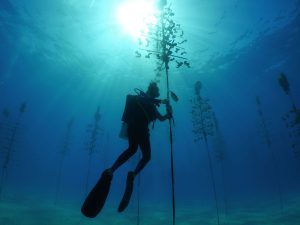Neither of the Bardouts grew up near the ocean, but they did grow up watching the films of Jacques Cousteau, which sparked a shared fascination with underwater exploration. Ghislain started scuba diving at the age of 15, and by the time he finished his studies in mechanical engineering, was an accomplished diver. Emmanuelle initially pursued her passion on the waves rather than beneath them, moving to Brittany after school to become a sailing teacher. It was there that she met Ghislain; he was her diving instructor.
In the mid-aughts, both were tapped to help coordinate logistics for the French polar explorer Jean-Louis Étienne, who was planning an expedition to the geographic North Pole. For Ghislain, diving under the Arctic sea ice for the first time was both the fulfillment of a childhood dream and a call to action: he would leverage his skills as a technical diver to study the ice shelf from under the water and “testify about a world that is disappearing.”
In 2008, he and Emmanuelle founded Under the Pole, and they have since undertaken several expeditions, collaborating with scientists from around the world to gather data on everything from snow depth and ice quality on the northern polar ice cap to bioluminescent organisms in the depths of the Northwest Passage. For their third exploration program, which began in 2017, Under the Pole shifted their focus from the warming Arctic to the biodiversity of the little-studied mesophotic zone. After transiting the Northwest Passage east to west, the Bardouts — now with two young sons along for the adventure — sailed the WHY to French Polynesia, where scientists at the Centre for Island Research and Environmental Observatory (CRIOBE) were studying the mesophotic reef system.
That mission saw the Under the Pole team collect more than 6,000 coral samples, including the deepest sample ever retrieved, at 172 metres. Finding living coral at that depth “proved we had a very limited view of coral,” says Laetitia Hedouin, a CRIOBE researcher and one of two scientific directors for DEEPLIFE, Under the Pole’s current exploration program. Corals live in symbiosis with microalgae that photosynthesize energy from the sun, so Hedouin wondered how they were able to survive at the outer limits of light penetration. She doesn’t dive, so teamed up with Under the Pole to study deep reefs across 11 islands. The team found biodiversity hotspots, particularly between 40 and 60 metres, where corals appear to be thriving. The reasons why are not fully understood, but what’s clear to Hedouin and her DEEPLIFE scientific co-director Lorenzo Bramanti is that conservation decisions must take deep reefs into account as well as shallow ones, with protections applied throughout the water column.
Bramanti, a researcher with the French National Centre for Scientific Research (CNRS), is one of a growing number of marine biologists advocating for a shift in how we view reef ecosystems. When they grow together in great enough numbers, corals, gorgonians, sponges, bivalves and other sessile marine animals function much like terrestrial forests: they form a canopy, moderate light, currents, and water temperature, cycle nutrients, and provide food and habitat for a wide range of species. Viewing these systems as “marine animal forests,” a term that was first used by Alfred Russel Wallace in 1869, is essential for their conservation, Bramanti says, because it moves the conversation from the protection of individual species to the protection of the whole. “[On land], we protect the forest, not the trees. If the forest is functioning well, it can support the health of the surrounding environment.”












